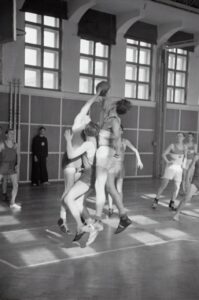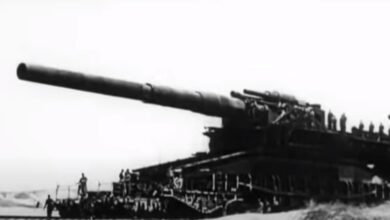The History of Basketball
Few organized sports in the world have a more unique history than basketball. Sure, soccer (or association football) is the most popular sport in the world, and baseball is known as “America’s Pastime.” With intense physical contact, rugby, American football, and Australian Rules football draw large crowds. Still, basketball is a sport that appeals to people of all athletic abilities and draws fans and players from all over the world.
Basketball is undoubtedly one of the world’s most diverse sports, and the reasons for this can be found in its illustrious history. Let’s look at how basketball was invented and how it evolved into the great global sport it is today.
A Brief History of Basketball
Some sports are so old that no official records show when they first began. Basketball has been in existence for 129 years. When we look at the history of sports, it can be challenging to pinpoint the precise date of their invention because they are generally adapted or created from a combined effect of other existing games.
This is not the case with basketball. Fortunately, we have records, and there were numerous witnesses to the game’s original creation. The original 13 rules, created by James Naismith, are maintained at the DeBruce Center on the campus of the University of Kansas.
The idea was born in the late fall of 1891 in Springfield, Massachusetts. Springfield College, then known as International YMCA Training College, was launching a new program called “Physical Education.” Luther Halsey Gulick, the program’s founding superintendent, was looking for a game that could be played after the football and lacrosse seasons ended. Because of the cold, snowy winters in New England, the game had to be played indoors.
Gulick challenged his new young trainer James Naismith to create an activity that would keep his students active and engaged. Naismith aimed to develop an athletically demanding sport but not as rough and physical as football, lacrosse, or rugby. He did not want his students to break bones or sustain other serious injuries because they had to play in an indoor gym’s smaller, confined space.
The Inventor of Basketball
James Naismith (November 6, 1861) was a Canadian-American who invented the game of basketball at the age of 30. He was a physical educator, basketball coach, physician, and chaplain, among other things. He was a true innovator because he was tasked with creating a new athletic activity and quickly invented basketball.
On November 6, 1861, Naismith was born and was raised on a farm near Almonte, Ontario, Canada, as the son of Scottish immigrants. He struggled in school, but he was a capable farm worker who enjoyed playing duck on a rock and hide-and-seek with his friends in his free time.
The First Basketball Game Ever
According to most sources, the first basketball game occurred on December 21, 1891. This was when Naismith published the original rules, which were then used in a game. He had 18 students in his class and divided the teams into two groups of nine. The first game with the 13 original rules was played on December 21, 1891. With the new regulations, the game played precisely as Naismith had imagined.
The gym was about 50 feet by 35 feet in size. Much smaller than today’s standard courts. The game was divided into two 15-minute halves, with three centers, three forwards, and three guards on each team. Team 1 eventually won the first game, with William R. Chase scoring the first basket in basketball history. Because dribbling was not yet a part of the game, the game began with a jump ball. The final score of the game was a whopping 1 – 0.
The 13 Rules of Basketball
These 13 original rules were used to control his class of energetic athletes is as follows:
- Fling the ball in any direction with one or both hands.
- The ball can be batted in any direction with one or both hands.
- Running with the ball is not permitted by a player, with an exception for a man who collects the ball while running at a reasonable speed and tries to stop. The player must throw it from the same position where he caught it.
- The ball must be kept in or between the hands; it cannot be held with the arms of the body.
- No shouldering, tripping, pushing, striking, or holding an opponent. Any person’s first violation of this rule is a foul; the second disqualifies him. There will be no substitutions.
- A foul is defined as striking the ball with one’s fist, in violation of rules three and four and as described in rule five.
- The opponents will score a goal if either team commits three consecutive fouls.
- A goal is scored when the ball is launched from the ground into the basket and stays there (without falling) as long as the defenders do not touch or interfere with the goal. If the ball is resting on the edges and the opponent moves the basket, it counts as a goal.
- The thrower-in has five seconds. If he keeps it for too long, it will be given to the opponent. Umpire will call a foul on that team which will continue to delay the game.
- The umpire shall be the men’s judge, recording fouls and informing the referee. Under Rule 5, he will have the executive power to disqualify individuals.
- The referee shall be the ball’s judge, determining when it is in play, to which side it belongs, and keeping time. He will decide and announce when a goal has been scored and keep track of the baskets, in addition to other duties normally performed by a scorekeeper.
- The time will be divided into two fifteen-minute halves, with a five-minute break.
- At the end of the game, the team with the most points is declared the winner.
As it can be seen, the original rules differed greatly from the rules of today’s game, but this is how it all started. As the game spread throughout the country and the world, the rules were changed, and new rules were implemented to improve the game.





